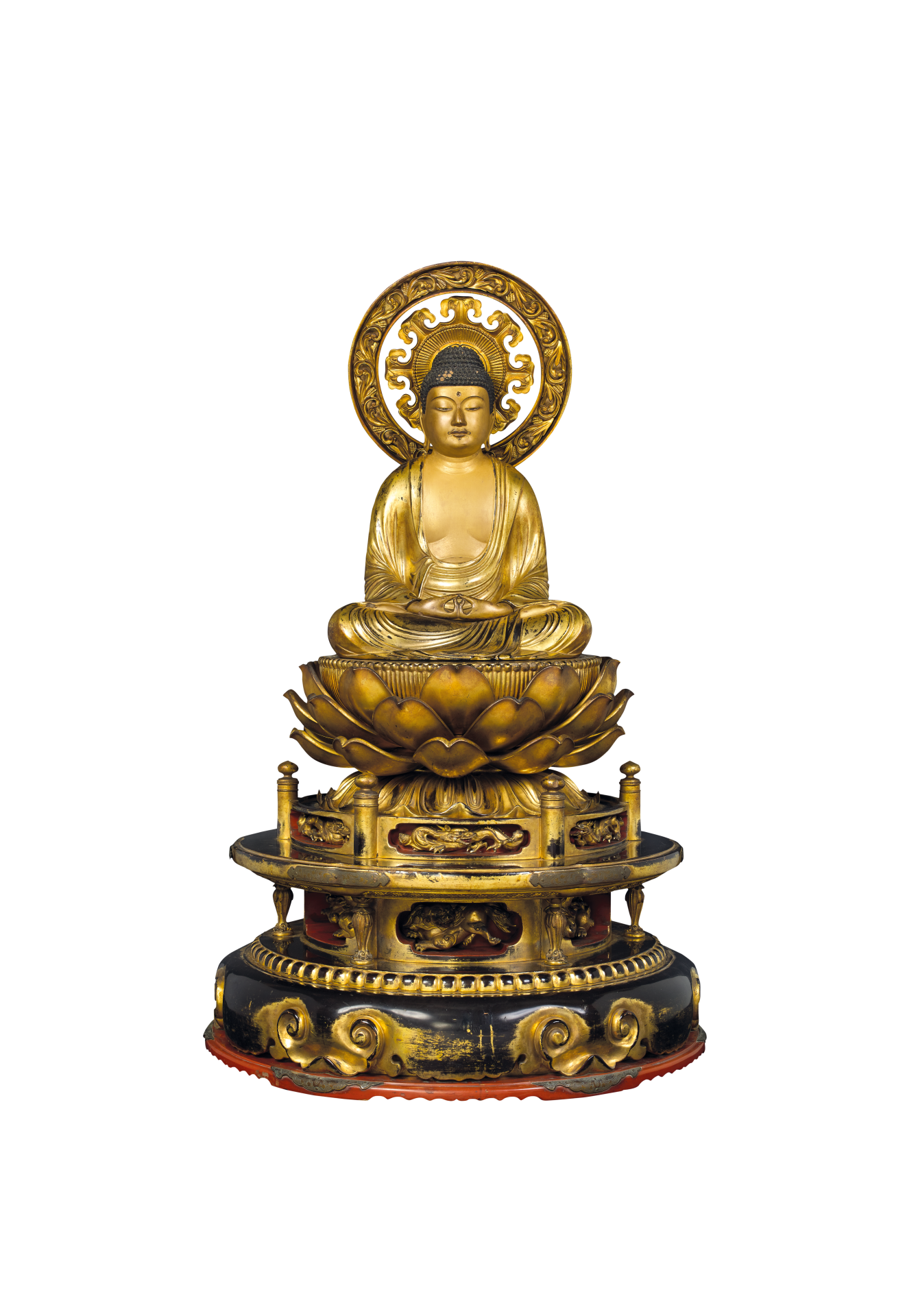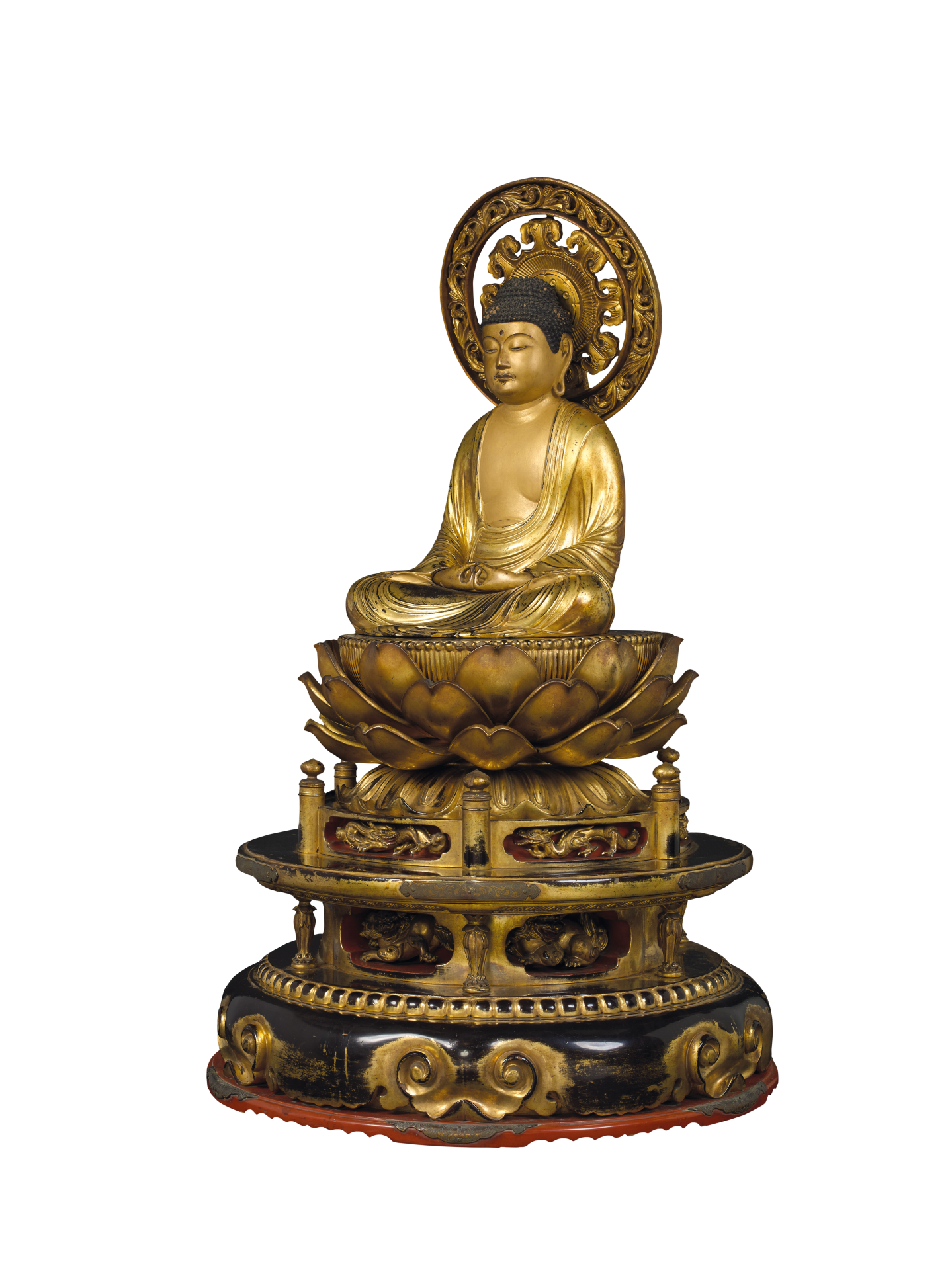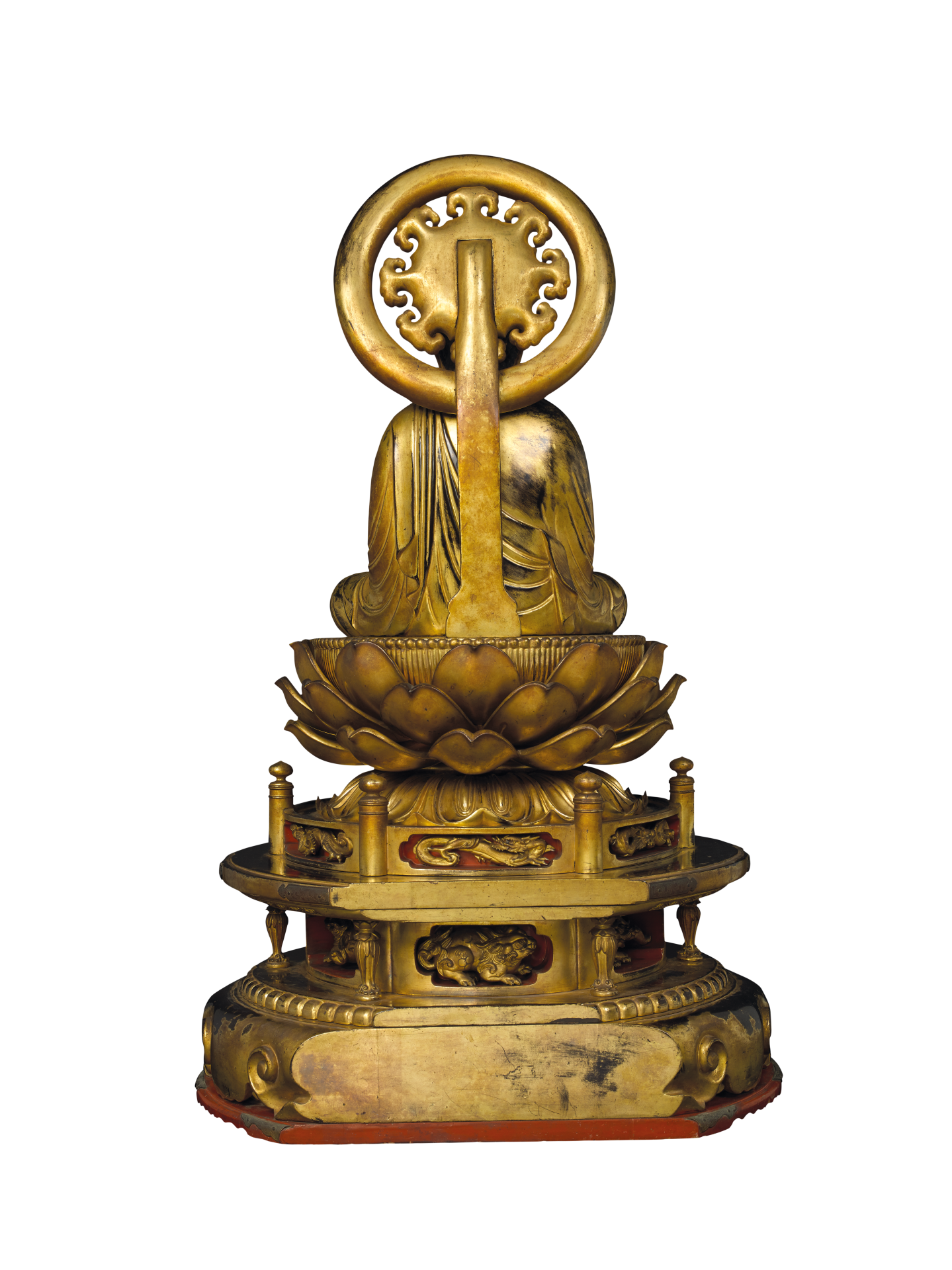Seated Amitābha Buddha
This Amitābha statue has an oblong face with plump cheeks, a prominent uṣṇīṣa, tight snail-like indigo curls, pierced elongated ears, an ūrṇā between the eyebrows with the gem set into it missing; well-spaced facial features, fine arching eyebrows, quite shallow eye sockets, downcast eyes; the eyebrows and a curly moustache delineated in black, as well as a solemn and majestic countenance.
Amitābha’s hands are in ‘Amitābha meditation gesture’ symbolising rebirth in “the upper grade of the superior class”. He wears a kāṣāya with collars hanging down both shoulders, baring his chest. He is seated with legs locked in ‘lotus posture’ (padmāsana) on a pedestal. He has a strong solid build, broad round shoulders, sagging chest muscles, and a relatively low chest line above a slightly protruding belly. The drapery appears even more formalised than Kamakura statuary, with most folds fashioned as parallel catenaries. The folds are fluidly and dense but the fabric appears quite thin. The ridged lines around the legs and the wavy pleats formed by the hemline resting against the surface of the pedestal are extremely decorative.
The statue is very well preserved, with intact nimbus and pedestal displaying exquisite carved details. The pedestal is made up of a circular stand surmounted by a lotus throne in the form of a full-blown lotus with half of the petals facing upward and the other half facing downward. The meticulously crafted high pedestal can broadly be divided into four tiers. The topmost tier is the double-lotus throne with petals differing in style, notably broad flaring petals around the upper part resembling a full-blown flower, and heart-shaped petals with upturned tips in the lower part. The middle tier is surrounded by parapets with openwork cartouches enclosing undulating dragons of different postures, with heads looking forward or turning around. The third tier is also surrounded by parapets, with openwork cartouches featuring fierce lions with head turning around to show a frontal view, and mouths gapping. The bottom tier is enclosed by parapets with openwork cartouches featuring fierce lions with a gaping mouth and the head turning around to show a frontal view. The upper rim of the bottom tier is carved with a round of continuous beads, and the sides with relief ruyi-shaped scrolling clouds. The foot ring is lacquered in red and partially mounted with bronze chiselled design.


